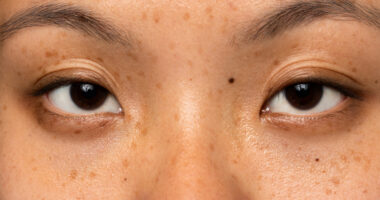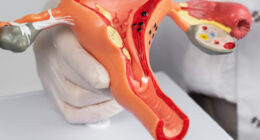Seizures occur when there is a sudden surge of electrical activity in the brain, leading to various symptoms depending on the type of seizure. These symptoms can range from mild and barely noticeable to severe and life-altering. Understanding the different types of seizures is crucial for both those living with epilepsy and their caregivers. This knowledge can help manage the condition effectively, recognize seizure activity, and seek appropriate treatment.
This blog will explore the primary types of seizures and their characteristics.
1. Generalized Seizures
Generalized seizures involve the entire brain and typically result in a loss of consciousness. These seizures are further divided into different subtypes:
A. Tonic-Clonic Seizures (Grand Mal)
Tonic-clonic seizures are perhaps the most well-known type of seizure. They consist of two phases:
Tonic phase: The person loses consciousness, their body stiffens, and they may fall to the ground.
Clonic phase: This is followed by rhythmic jerking movements, usually lasting a few minutes.
During a tonic-clonic seizure, the person may bite their tongue, lose bladder control, and have difficulty breathing. After the seizure, confusion, fatigue, and soreness are common.
B. Absence Seizures (Petit Mal)
Absence seizures are brief and primarily affect children. They involve a sudden lapse in awareness, often lasting just a few seconds. The person may appear staring into space, blinking rapidly, or have subtle facial movements. These seizures can occur frequently throughout the day and may go unnoticed, making them harder to diagnose.
C. Myoclonic Seizures
Myoclonic seizures cause sudden, brief jerking or twitching of muscles. These movements can affect the arms, legs, or entire body. Myoclonic seizures often occur shortly after waking up and may happen in clusters. Although short, they can be disruptive and lead to injury if the person falls or drops something.
D. Atonic Seizures (Drop Attacks)
Atonic seizures are characterized by a sudden loss of muscle tone, causing the person to collapse or fall. These seizures are short, usually lasting only a few seconds, but they can be dangerous because of the risk of injury from falling. People who experience frequent atonic seizures may need to wear protective headgear.
E. Tonic Seizures
Tonic seizures cause a sudden stiffening of the muscles, usually in the arms, legs, or back. They often occur during sleep and may cause the person to fall if they are standing. These seizures last only a few seconds but can lead to injury.
F. Clonic Seizures
Clonic seizures involve rhythmic jerking movements, typically affecting the face, neck, and arms. These movements are more prolonged than myoclonic seizures and can cause significant muscle fatigue. Clonic seizures are less common on their own and often occur alongside tonic seizures.

2. Focal Seizures (Partial Seizures)
Focal seizures begin in a specific part of the brain, and their symptoms depend on the area affected. These seizures are divided into two main categories:
A. Focal Aware Seizures (Simple Partial Seizures)
In focal aware seizures, the person remains conscious and aware of their surroundings. Symptoms can vary widely, from unusual sensations or emotions to sudden, uncontrolled movements in one part of the body (e.g., jerking of the hand or face). Some people experience a sudden feeling of déjà vu or intense fear.
B. Focal Impaired Awareness Seizures (Complex Partial Seizures)
Focal impaired awareness seizures involve a change or loss of consciousness. The person may seem confused, dazed, or unable to respond during the seizure. They might perform repetitive movements, such as lip-smacking, hand-clapping, or walking in circles. These seizures can last from 30 seconds to a few minutes and may leave the person feeling disoriented afterward.
3. Unknown Onset Seizures
In some cases, it’s unclear where in the brain a seizure begins, especially if it happens at night or without any witnesses. These are classified as unknown onset seizures until more information is available. Over time, unknown onset seizures may be reclassified as either generalized or focal seizures as doctors learn more about the person’s condition.
Seizure Auras
Some people experience warning signs, known as auras, before a seizure. Auras can include strange sensations like tingling, dizziness, visual disturbances, or emotional changes. These signs may precede focal or generalized seizures and allow the person to seek safety before the seizure begins.
Managing Seizures
Treatment for seizures depends on the type and frequency of the seizures, as well as the underlying cause. Standard treatment options include:
Medication: Anti-epileptic drugs (AEDs) are the most common treatment and can help control seizures.
Lifestyle changes: Managing stress, getting enough sleep, and avoiding seizure triggers can reduce the likelihood of seizures.
Surgery: In some cases, surgery may be recommended to remove the part of the brain causing seizures.
Devices: Vagus nerve stimulation (VNS) or responsive neurostimulation (RNS) devices may help control seizures when medication isn’t practical.
Conclusion
Understanding the different types of seizures is vital for managing epilepsy and preventing complications. Whether generalized or focal, seizures can vary in intensity and duration, but proper treatment and care can help reduce their frequency and improve the quality of life for those affected. If you or someone you know has seizures, it’s essential to work closely with a healthcare provider to develop a personalized treatment plan that addresses the specific type of seizures they experience.









